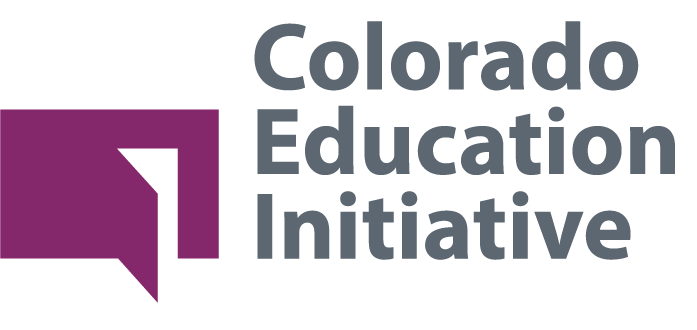CEI Design Commitments
CEI’s six design commitments, embedded within all of our projects, define what we believe are critical levers for system transformation.
![]() Diversity, Equity, and Inclusion: For too long, education systems have produced reliable and significant gaps in achievement and growth for low-income students and students of color. CEI is committed to isolating race, class, gender, and language as opportunities to interrupt bias in the education system; support educators to redesign the systems that produce inequitable results; and develop mindsets, practices, and conditions that disrupt inequity.
Diversity, Equity, and Inclusion: For too long, education systems have produced reliable and significant gaps in achievement and growth for low-income students and students of color. CEI is committed to isolating race, class, gender, and language as opportunities to interrupt bias in the education system; support educators to redesign the systems that produce inequitable results; and develop mindsets, practices, and conditions that disrupt inequity.
![]() Youth Activation: The outcomes we seek necessitate a shift in student empowerment – students will not achieve these outcomes without a combination of agency, power, and purpose in their learning. CEI is committed to partnering with and empowering young people to take agency in their learning, make learning relevant for themselves, and work with educators to co-create and co-produce learning experiences that meet their needs.
Youth Activation: The outcomes we seek necessitate a shift in student empowerment – students will not achieve these outcomes without a combination of agency, power, and purpose in their learning. CEI is committed to partnering with and empowering young people to take agency in their learning, make learning relevant for themselves, and work with educators to co-create and co-produce learning experiences that meet their needs.
![]() Family and Community Partnership Schools and systems should be co-created and designed with all members of the families and communities they represent. Research shows that this creates better outcomes, public trust, and innovation – and that the lack thereof inhibits scalable, sustainable, and successful change. CEI’s commitment to family and community partnership focuses on helping schools and districts evolve into open systems that organize around equitable outcomes rooted in the values of the community, and partner with families and communities to deliver on public value.
Family and Community Partnership Schools and systems should be co-created and designed with all members of the families and communities they represent. Research shows that this creates better outcomes, public trust, and innovation – and that the lack thereof inhibits scalable, sustainable, and successful change. CEI’s commitment to family and community partnership focuses on helping schools and districts evolve into open systems that organize around equitable outcomes rooted in the values of the community, and partner with families and communities to deliver on public value.
![]() Social Emotional Development: CEI believes that an expanded definition of student success requires that schools and districts both name social emotional outcomes as integral to academic outcomes and develop and implement practices to support them for all students. We are committed to supporting schools and districts to create an ecosystem approach to SED, including: 1) learning environments that are psychologically and identity safe, relationship rich, and build SED skills; 2) multi-tiered systems of supports for struggling students and staff; 3) common, visible, and diverse student voice and student-adult partnerships; and 4) engagement of diverse families in the school’s SED vision.
Social Emotional Development: CEI believes that an expanded definition of student success requires that schools and districts both name social emotional outcomes as integral to academic outcomes and develop and implement practices to support them for all students. We are committed to supporting schools and districts to create an ecosystem approach to SED, including: 1) learning environments that are psychologically and identity safe, relationship rich, and build SED skills; 2) multi-tiered systems of supports for struggling students and staff; 3) common, visible, and diverse student voice and student-adult partnerships; and 4) engagement of diverse families in the school’s SED vision.
![]() Relevant Learning: CEI believes that preparing students for future success requires their engagement in a variety of relevant learning experiences that allow them to explore interests, passions, and strengths; develop skills aligned with career pathway interests; and apply the skills they are learning in school in real-world settings.
Relevant Learning: CEI believes that preparing students for future success requires their engagement in a variety of relevant learning experiences that allow them to explore interests, passions, and strengths; develop skills aligned with career pathway interests; and apply the skills they are learning in school in real-world settings.
![]() Leadership and Change Management: Research tells us the most critical factor in transformation is the quality of leadership. Leaders must demonstrate the mindsets and skills to carry out each of the aforementioned design commitments. CEI is committed to supporting school and district leaders to lead complex change that fosters collective efficacy, learning aligned to goals, operational excellence, and responsive support between schools and the district central office in ways that scale, diffuse, and sustain effective practices.
Leadership and Change Management: Research tells us the most critical factor in transformation is the quality of leadership. Leaders must demonstrate the mindsets and skills to carry out each of the aforementioned design commitments. CEI is committed to supporting school and district leaders to lead complex change that fosters collective efficacy, learning aligned to goals, operational excellence, and responsive support between schools and the district central office in ways that scale, diffuse, and sustain effective practices.
